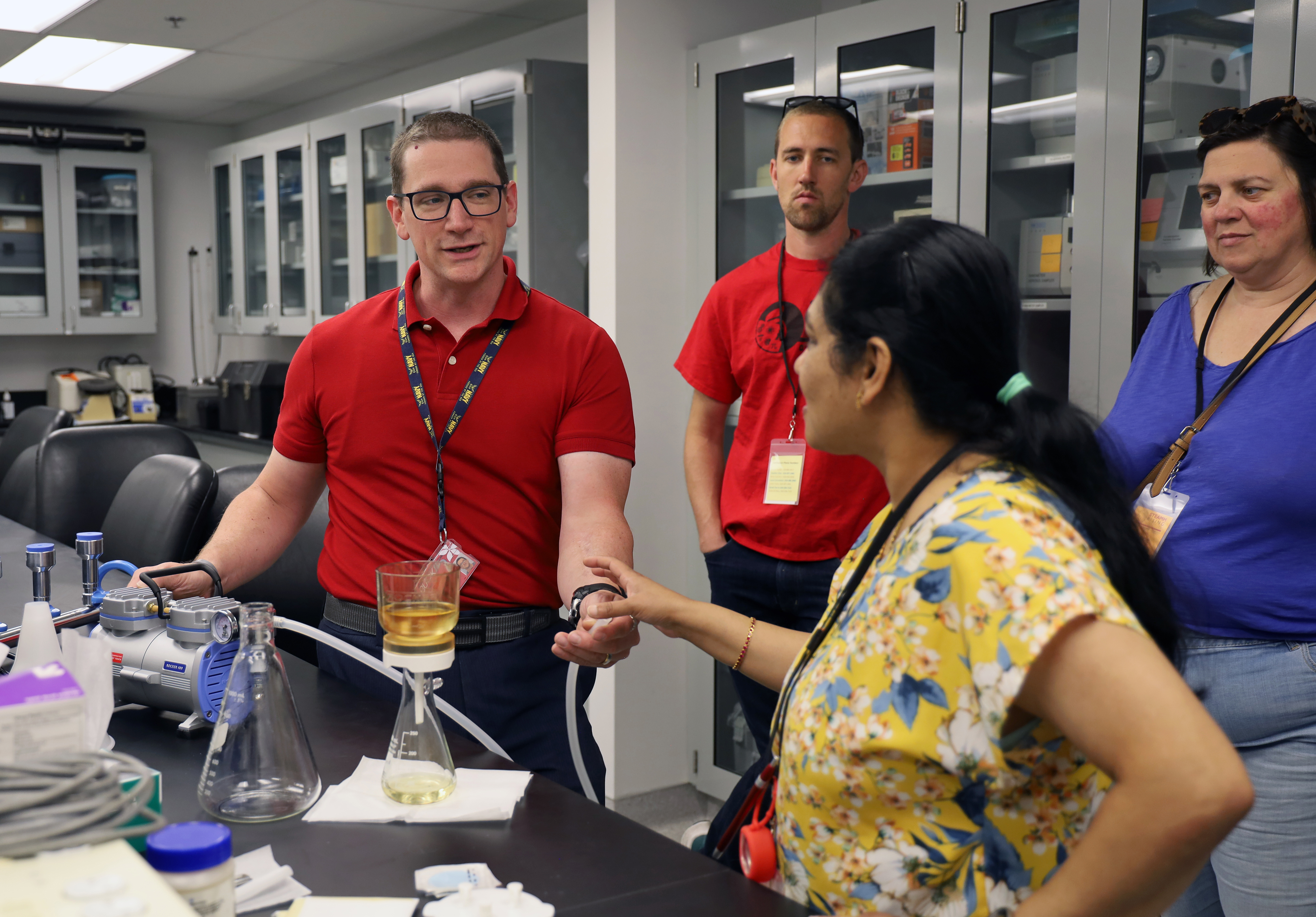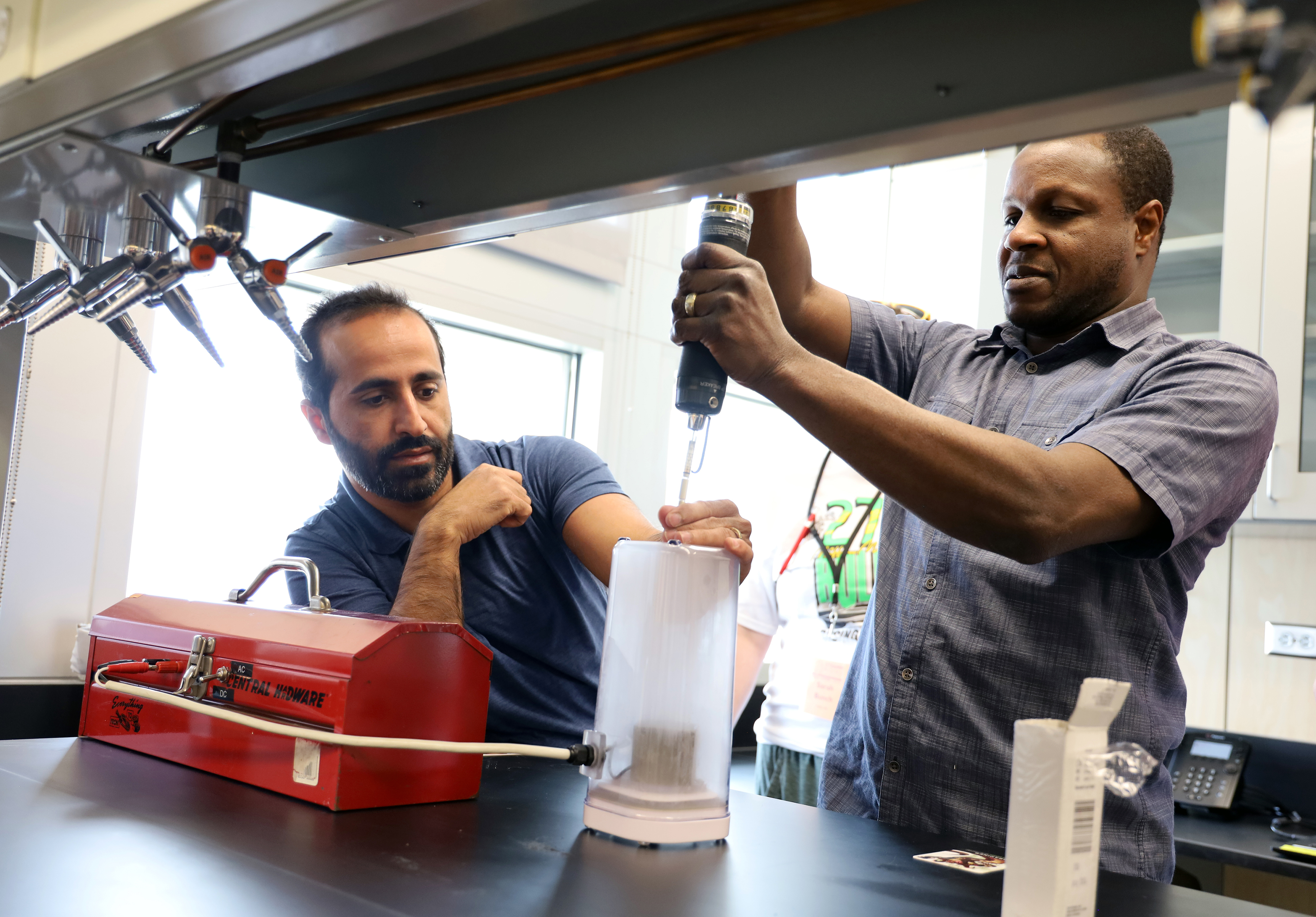Faculty share demonstrations on water quality, tobacco with Columbus teachers
K-12 teachers explore how to make public health part of their lesson plans
By Kristen Mitchell

The College of Public Health welcomed K-12 educators from Columbus City Schools to Cunz Hall as part of the three-day STEAMM Rising Institute for a session on how they can incorporate public health concepts in their classrooms.
CPH associate professors Olorunfemi Adetona and Mark Weir, Assistant Professor Ahmad El Hellani, and postdoctoral researcher Molly Mills and graduate student Jonathan Leopold from Professor Jiyoung Lee’s lab gave hands-on demonstrations focused on water filtration, microbial contaminants in water and formaldehyde exposure in traditional cigarettes and e-cigarettes.
STEAMM Rising is a collaboration with the city of Columbus, Columbus City Schools and Columbus State Community College that aims to establish pathways for children to pursue careers in science, technology, engineering, the arts, mathematics and medicine.
“It was nice to see the teachers excited to learn more about what we do here at CPH and transfer this knowledge to their students,” El Hellani said. “We as CPH faculty look forward to establishing a long-term partnership with these teachers and their schools.”

When everything is going right, the contributions of public health practitioners are often not visible to the public, said Aram Dobalian, CPH associate dean of graduate studies. Exposing teachers to public health fields is one way to reach young people interested in careers with population-level impacts.
“It can be a little difficult to explain, even for people in the field, everything that public health professionals do because it’s so broad,” he said. “If you want to make change on a broad level, public health is one of the best places to do that.”
Adetona said his favorite part of the event was observing teachers grow their awareness about the “practical contributions of public health to improving and sustaining good individual and societal quality of life, and the potential impact that public health education could have on their students by encouraging healthy behaviors.”
Participating educators rotated through demonstrations by CPH, the College of Optometry, the College of Education and Human Ecology Department of Human Sciences and the College of Arts and Sciences Department of Speech and Hearing Science during the first day of the institute.
About The Ohio State University College of Public Health
The Ohio State University College of Public Health is a leader in educating students, creating new knowledge through research, and improving the livelihoods and well-being of people in Ohio and beyond. The College's divisions include biostatistics, environmental health sciences, epidemiology, health behavior and health promotion, and health services management and policy. It is ranked 22nd among all colleges and programs of public health in the nation, and first in Ohio, by U.S. News and World Report. Its specialty programs are also considered among the best in the country. The MHA program is ranked 5th and the health policy and management specialty is ranked 21st.